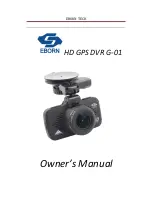
Cheetah Pregius Camera with GigE Vision
®
Interface – User Manual
August 27, 2019
Page
101
of
123
Rev 1.0
5 Camera Features
5.1 Exposure Control
You can select one of the exposure control modes: Off, Timed, or Trigger Width. When
exposure control is
Off
, the frame readout time determines the exposure time.
However, the camera’s electronic exposure control can precisely control the image exposure
time by selecting the cameras internal timer. The electronic exposure control does not affect
the frame rate in free-running mode and Fast Trigger mode, because the exposure and
readout operations are overlapped in time. In Standard Trigger mode, the maximum frame
rate will be dependent upon the exposure time, because the exposure and readout occur
sequentially (not overlapped).
In
Timed
mode, the camera controls the start of exposure. The maximum exposure is equal
to the frame time. For longer exposure times, increase the frame period using the Acquisition
Frame Time or Acquisition Frame Rate features.
In Free-run and Fast Trigger modes, the minimum exposure is equal to 14 microseconds for
C2000, C2400, C2010, C2410, C4010, C4110 cameras, 5 microseconds for C3210 camera, and
30 microseconds for C4410, C5410, C6410 cameras.
In Standard Trigger mode, the minimum exposure is equal to 1 line time. This value depends
on camera model and some other parameters such as Pixel Format.
The camera exposure can also be controlled by the pulse width of the external trigger signal
(
Trigger Width
mode). This mode is available in both Standard and Fast Trigger modes. Select
Trigger Width under the Exposure Mode options and set Trigger Type to Standard or Fast. In
Fast Trigger mode, ensure that Trigger Activation is set to Falling Edge.
Internal Exposure Control - Electronic Shutter
In global shutter mode, all pixels in the array reset at the same time, then collect signal during
the exposure time, and finally transfer the image to a pixel memory region within each pixel.
After transferring the image to the pixel memory region, the readout of the array begins. In
this way, all pixels capture the image during the same period, which reduces any image
artifacts due to motion within the scene. The maximum exposure is frame-time dependent,
and the minimum exposure varies based on the image sensor.
The camera overlaps the exposure and read-out times in free-running and Fast trigger modes
as shown in the following figure.
















































